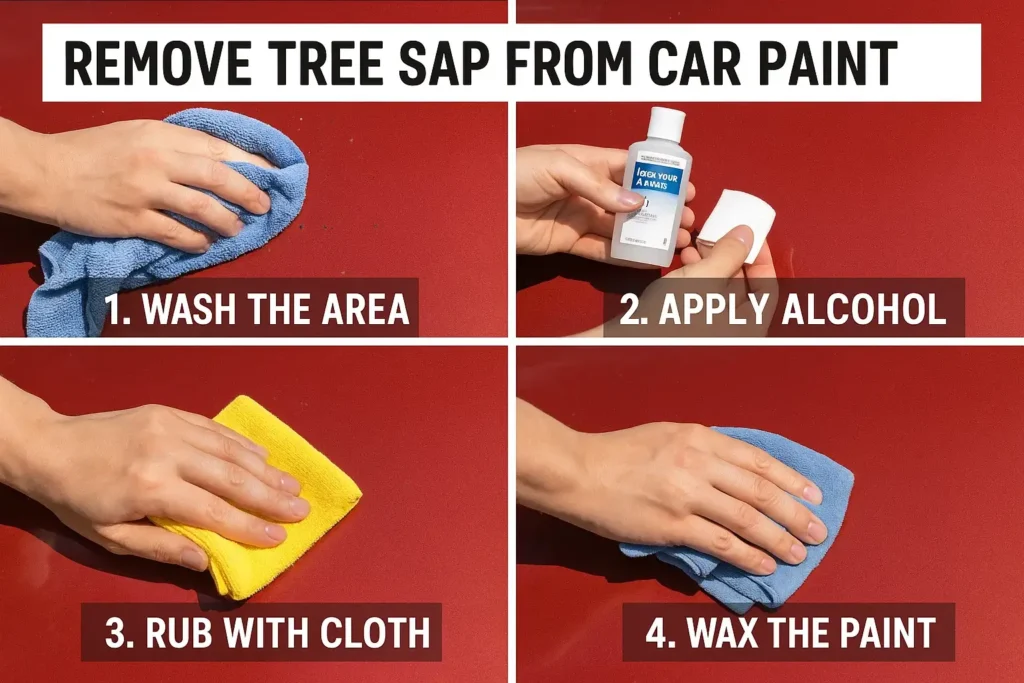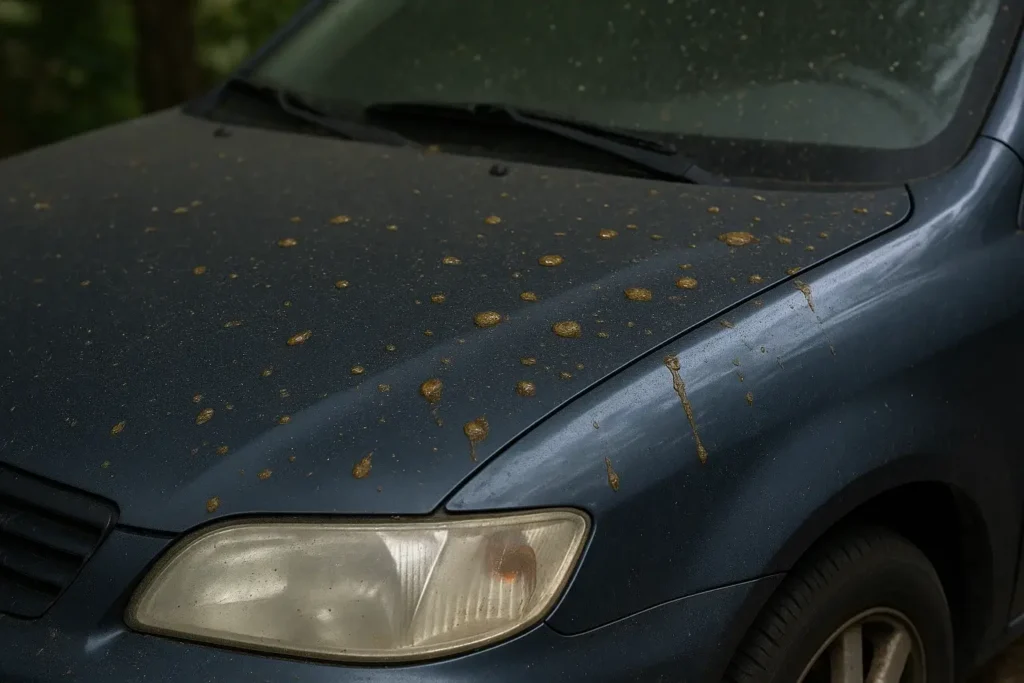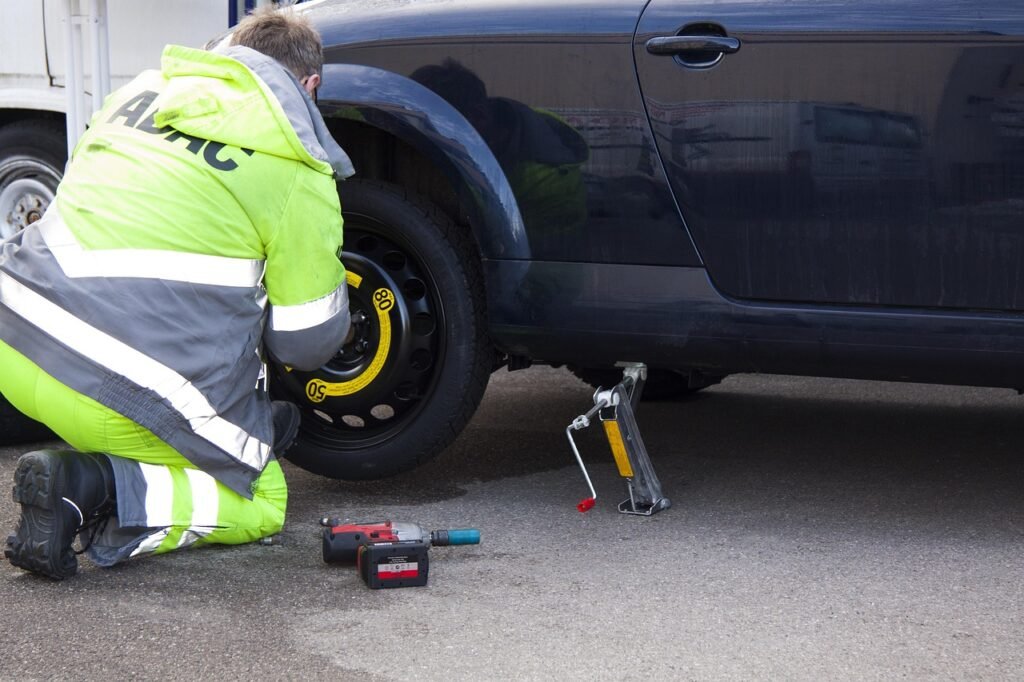Finding sticky tree sap on your car is more than just annoying. It can seriously damage your paint if not removed properly. Whether it’s a fresh drop or hardened residue baked by the sun, knowing how to remove tree sap from your car quickly and safely is essential to protect your vehicle’s appearance and value.
In this comprehensive guide, we’ll walk you through the best methods to remove tree sap from car paint, windows, windshields, and plastic trim, while helping you avoid costly mistakes.
Why Tree Sap Is a Threat to Your Car
Tree sap might seem harmless at first glance, but it’s an acidic, sticky substance that can:
- Eat into your car’s clear coat
- Stain the paint surface
- Be difficult to remove once hardened
- Leave behind etching or permanent blemishes
The longer sap sits on your vehicle, especially under sunlight, the more it bonds to the surface making it harder to clean and more likely to cause damage.
What You’ll Need to Remove Tree Sap
Before starting the sap removal process, gather the right tools and cleaners to avoid scratching or damaging your car.
Essential Supplies:
- Microfiber towels
- Warm, soapy water
- Isopropyl alcohol (70–90%)
- Clay bar kit
- Bug & tar remover
- Car wax or sealant
Optional (for stubborn sap):
- Tree sap remover sprays (Meguiar’s, Turtle Wax, etc.)
- WD-40 or Goo Gone (use with care on paint)
- Plastic razor blade (for glass only)
🔎 Tip: Always spot test any chemical on an inconspicuous area before applying it to visible paint or trim.
How to Remove Tree Sap from Car Paint (Step-by-Step)
Paint is the most vulnerable part of your car when it comes to tree sap. Follow this safe, effective method:
1: Wash the Area with Warm, Soapy Water
- Clean the sap-covered area to remove dirt and soften the sap.
- This prevents scratching during the removal process.
2: Soften the Sap with Isopropyl Alcohol or Remover
- Soak a microfiber cloth with rubbing alcohol or sap remover.
- Gently lay the cloth over the sap for 30–60 seconds to break it down.
3: Wipe Gently in Circular Motions
- Use light pressure with a clean cloth to wipe the sap away.
- Repeat the process if needednever scrub aggressively.
4: Use a Clay Bar for Residue
- If any residue remains, a clay bar can lift it from the surface.
- Lubricate the area and glide the clay bar gently.
5: Rinse, Dry, and Wax the Area
- Wash and dry the area again.
- Apply a coat of car wax to restore protection and shine.

How to Remove Tree Sap from Windshields and Windows
Glass surfaces are more forgiving, but sap can still obstruct your view and create sticky spots.
Use Rubbing Alcohol or Glass Cleaner
- Spray or apply alcohol-based cleaner to the sap.
- Let it sit for a minute, then wipe away with a microfiber towel.
Use a Plastic Razor Blade for Hardened Sap
- ONLY for glass surfaces, never paint or plastic.
- Wet the area and gently scrape at a 45-degree angle to lift sap.
Finish with Streak-Free Glass Cleaner
- Clean the area thoroughly to prevent smearing and restore clarity.
⚠️ Interesting read: Professional Headlight Cleaning and Restoration
Removing Tree Sap from Plastic Trim and Rubber
Plastic trim and rubber moldings can trap sap in textured surfaces. Here’s how to clean them safely:
Apply a Citrus-Based Cleaner or WD-40
- Spray directly onto the sap (after spot-testing).
- Let sit for a few minutes to dissolve the sticky residue.
Use a Soft-Bristled Brush
- Gently scrub textured areas to dislodge sap without scratching.
Wipe Clean and Recondition Trim
- Use a microfiber cloth to remove residue.
- Apply a trim restorer or protectant to restore original color and shine.
How to Deal with Hardened or Aged Sap
If tree sap has been sitting on your vehicle for weeks or months, it’s likely hardened and more difficult to remove.
Use Heat to Soften the Sap
- Use a hairdryer (not a heat gun) to gently warm the sap.
- Softens the residue and makes it easier to wipe or clay off.
Combine Clay Bar + Alcohol for Tough Spots
- Heat, soften, then clay the residue to lift it completely.
Consider Professional Detailing
- If the sap has etched into the paint or clear coat, detailing or paint correction may be required.
Common Mistakes to Avoid When Removing Tree Sap
Avoid these costly errors that can damage your vehicle:
- Scraping with metal tools
- Using harsh chemicals like acetone or nail polish remover
- Applying pressure to dry, hardened sap
- Skipping re-waxing after cleaning
Always use gentle, paint-safe products and follow with a protective finish.
How to Prevent Tree Sap from Damaging Your Car
The best way to deal with sap is to prevent it from sticking in the first place.
Park Smart
- Avoid parking under trees, especially pine, maple, and birch, which are known for sticky sap.
Use a Car Cover
- A quality car cover protects against sap, bird droppings, pollen, and UV rays.
Apply Ceramic Coating or Sealant
- Coatings create a barrier that makes sap easier to wipe off and less likely to bond.
Final Thoughts
Tree sap is more than just a sticky nuisance. it’s a real threat to your vehicle’s paint, windows, and trim. With the right tools and techniques, you can safely remove tree sap from your car and prevent long-term damage.
Be proactive:
- Inspect your car regularly.
- Use protective products like wax or ceramic coatings.
- Clean sap immediately to preserve your vehicle’s finish.
FAQs
Does vinegar remove tree sap from car paint?
Vinegar can soften sap but isn't as effective as alcohol-based removers. If used, apply gently and avoid prolonged contact to prevent dulling the paint.
Can tree sap damage my car’s paint?
Yes, if left untreated, tree sap can harden and etch into the clear coat, causing permanent stains or paint discoloration. It’s best to remove it as soon as possible.
What household items can I use to remove sap?
You can use rubbing alcohol, hand sanitizer (with high alcohol content), peanut butter, or even nail polish remover (non-acetone). Always test a small area first and wash the spot afterward.
How do I remove hardened sap that’s been there for a while?
Soften the sap first by applying warm, soapy water or a hot towel over the area for a few minutes. Then use an alcohol-based cleaner and gently rub with a microfiber cloth until the sap loosens.



